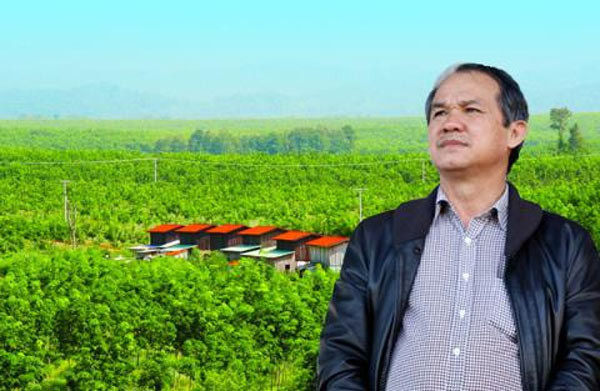Signs of revival
On June 19, Doan Nguyen Duc, Chairman of Hoang Anh Gia Lai JSC (HOSE: HAG), completed a negotiated purchase of 10 million HAG shares, raising his ownership from 30.26% to 31.2%, equivalent to nearly 330 million shares. The transaction is estimated at over USD 5.3 million.
Not only Duc, but other board members have also registered to purchase additional HAG shares. Vo Thi My Hanh and Ho Thi Kim Chi, two deputy general directors and board members, plan to buy a total of 2 million shares between June 23 and July 22. After the transaction, Hanh’s stake will rise from 0.3 million to 1.3 million shares (0.12%), and Kim Chi’s from 0.6 million to 1.5 million shares (0.15%).
In the first quarter of 2025, HAGL reported impressive business results. Revenue reached nearly USD 54.2 million, up 11.2% year-on-year, while post-tax profit exceeded USD 14.1 million, marking a 59% increase. The company aims for USD 216 million in revenue and over USD 43.1 million in post-tax profit for 2025, slightly up from 2024.
At the 2025 Annual General Meeting, HAGL revealed its revenue breakdown: 76% from fruit (mainly durian), 19% from pig farming, and 5% from other products. These figures affirm that the “two trees, one animal” model (durian, banana, and pig farming) continues to drive growth.
Financially, HAGL has significantly reduced its debt burden. From a peak of USD 1.3 billion in debt and nearly USD 284 million in accumulated losses during its crisis years, the company has lowered its total debt to around USD 278 million.
At the end of 2024, HAGL repaid over USD 39 million in bond principal to BIDV, reducing its bond debt to about USD 29.9 million. The company plans to eliminate this entirely by Q2 2025.
Additionally, HAGL plans to issue 210 million shares to swap Group B bond debt, worth up to USD 99.3 million, at a price of USD 0.57 per share. While this move may dilute shares, Duc has pledged to repurchase treasury stock to protect existing shareholders.
The company is also investing aggressively in new sectors. It plans to grow 2,000 hectares of mulberry trees for silk production and 2,000 hectares of Arabica coffee. A project to farm 700,000 sturgeon in Laos is in the trial phase, with the first harvest expected in September or October 2025.
These initiatives show that HAGL is not only focused on financial recovery but is also actively seeking new growth drivers.
A decade of resilience

The past decade has been a turbulent journey for Hoang Anh Gia Lai. Once a dominant enterprise from the Central Highlands, HAGL plunged into financial crisis due to overexpansion in real estate, hydropower, and agriculture.
At its worst, the company faced nearly USD 284 million in accumulated losses and USD 1.3 billion in debt. Liquidity was severely strained, especially with bond and bank loan obligations.
To overcome the crisis, Doan Nguyen Duc implemented extensive restructuring. In 2018, HAGL reached a deal with Thaco, led by billionaire Tran Ba Duong, transferring HAGL Agrico (HNG) to secure capital for debt repayment. Thaco committed to restructuring HNG’s debt, alleviating pressure on HAGL. In late 2024, HNG transferred over USD 39 million to HAGL to settle BIDV bonds, helping reduce bond debt to USD 29.9 million.
HAGL also received support from LPBank, Thaiholdings, and benefited from reduced interest rates from Eximbank, significantly improving its financial health.
In parallel, HAGL refocused on core businesses. The “two trees, one animal” strategy capitalized on high durian prices and rising pork demand, enabling strong profits in 2024. Liquidating non-performing assets like the Hoang Anh Gia Lai Hotel and the HAGL University Medical Hospital also provided capital for restructuring.
These efforts helped HAGL reduce losses and improve cash flow.
Challenges remain, however. By the end of Q1 2025, total debt still hovered around USD 278 million, with short-term loans accounting for nearly USD 241 million. Agricultural operations carry risks related to market price volatility, high interest costs, and disease threats.
Still, Duc remains confident in HAGL’s long-term vision, aiming for USD 196 million in profit by 2028. He emphasizes that erasing accumulated losses will help attract major investment funds.
Bau Duc’s resolve, the board’s commitment, and improving business metrics may restore shareholder confidence after years of hardship. Continuous share purchases by Duc and the board are the latest signs of optimism for the company’s future.
While challenges lie ahead, HAGL may be on the verge of a remarkable comeback - from a debt-ridden enterprise to a recovery story worth watching.
Manh Ha